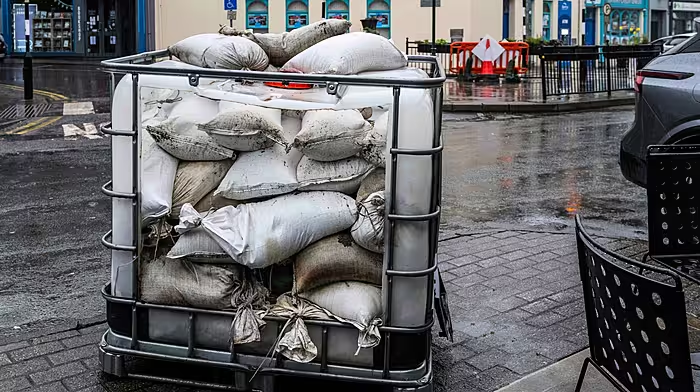TEAGASC advisors give us an insight into some of the people involved in West Cork’s farming story.
This week David Hallissey, an advisor in Macroom, talks to Joe and Aoife Barrett, in Oughiherra.
Joe Barret, his wife Louise and daughter Aoife farm just in the townland of Oughtiherra, not far from Rylane and Aghabullogue.
It’s a strong GAA household where Aoife keeps the family busy, having been involved with numerous Cork inter-country camogie and football teams over the years.
Aoife’s most recent success would be winning the intermediate camogie All Ireland championship in 2024 and receiving a personal accolade making the Soaring Stars team of the year.
Aoife is in second year of her agricultural degree in MTU Cork and is a big help to Joe in the day to day running of the farm.
The current farm system is purchasing approximately 120 dairy beef calves annually bringing them all to finish.
This has not always been the case as up until 10 years ago the farm was home to 80-90 suckler cows selling all progeny as weanlings.
The change of system required a change of configuration of sheds, but the biggest change was calf rearing.
Having done the traditional rearing for seven or eight years with teat feeders and manual mixing of milk powder, in 2023 Joe and Aoife made the decision to go down the route of the automatic calf feeder.
The main reason was to cut down on labour and to provide more flexibility when attending matches and training as there wasn’t the big rush to be home to feed calves looked after by the feeder.
The decision to make the purchase was made easier with the 40% Tams grant they received.
‘The reduction in labour and flexibility for them is huge but from a calf welfare perspective weaning is much easier on the calf and also the calves being feed three times a day is much more natural,’ explained Joe.
On the farm, calves are both reared as a spring batch of approximately 80 calves and an autumn batch of 40.
Joe did comment that getting the autumn calves is getting more difficult each year.
His reasons behind the autumn calves is to allow him to make better use of grass in the spring and also from a cash-flow perspective, he is selling cattle at different times of the year.
Performance on the farm is excellent with bullocks averaging 310kgs carcase at 23 months and heifers averaging 270kgs carcase at 21 months.
Joe has been purchasing a mix of breeds in recent years but is moving towards more Angus calves going forward to maximise weight gain from grass and to reduce requirement on concentrates feeds were possible.
To aid in his calf purchasing, Joe is also starting to use the new CBV index to highlight the calves that should give him the best genetics in terms of profitability, from a beef farmer’s perspective.
Other new investments on the farm in recent years include the construction of solar panels in 2022 which Joe said has reduced their farm and household electricity bill to virtually zero for about eight months of the year.
The most recent addition to the farm has been the purchase of a trailing shoe slurry tanker.
This only arrived in recent weeks, so 2025 will be Joe and Aoife’s first season with this machine.
The idea behind the change was to make more efficient use of slurry on the farm.
Furthermore the new slurry spreading rules for farmers over 100kgs N/ha meant they would have had to get a contractor to spread their slurry using low emission slurry spreading which would have not suited their system.
This new purchase will help them reduce chemical fertiliser purchases on the farm as they will gain three units of nitrogen per 1000 gallons of slurry applied.
The purchase was grant aided by 60% under Tams and would not have been made possible without it.
‘Farmers should avail of Tams grants while they are available,’ said Joe. ‘They might not be there forever if people don’t avail of them.’
In terms of future plans, a lot of the major investments haven been made for now and will help secure Joe and Aoife’s farm business into the future.
‘In the medium term, getting soil fertility closer to optimum across the farm is a priority of mine,’ said Aoife. ‘Currently it is sitting at approximately 25% for PH and P+K, in the longer term extending housing and slurry storage in particular is something she would like to increase. By improving soil fertility on the farm it will allow us to explore the clover option to see if it can help improve performance on the farm while at the same time reducing fertiliser costs.’
• David Hallissey is a B&T Drystock advisor in the Teagasc advisory office Macroom.










